Ohm Acoustics factory visit June 2024
Author: Brian Maddern Date Posted:25 June 2024
In early June 2024 I travelled to Bridgeport, Connecticut USA to visit the Ohm speaker factory. I had built several pairs of their W2000 tall cabinets in the previous 18 months and wanted to study their techniques, equipment, jigs etc so I could improve on the methods I was using to construct the quite intricate cabinets. The two senior craftsmen have each been making Ohm speakers for over 50 years, so have much experience that I could learn from. I also wanted to look at the different models they make, with a view of offering more in Australia.
Last year massive rent increases forced the factory to be moved from Brooklyn to Bridgeport. Although operational, they are still in the process of getting the workshop organised and are setting up a demonstration room so prospective customers can come and audition the range of speakers.
The workshop is a bit of a museum, with dozens of older model Ohm speakers in storage or in the process of being repaired or upgraded. In the 80's Ohm had a large dealer network and built many models of conventional speakers as well as the Walsh-driver based models. Here's a photo of an early Walsh models showing the metal cone.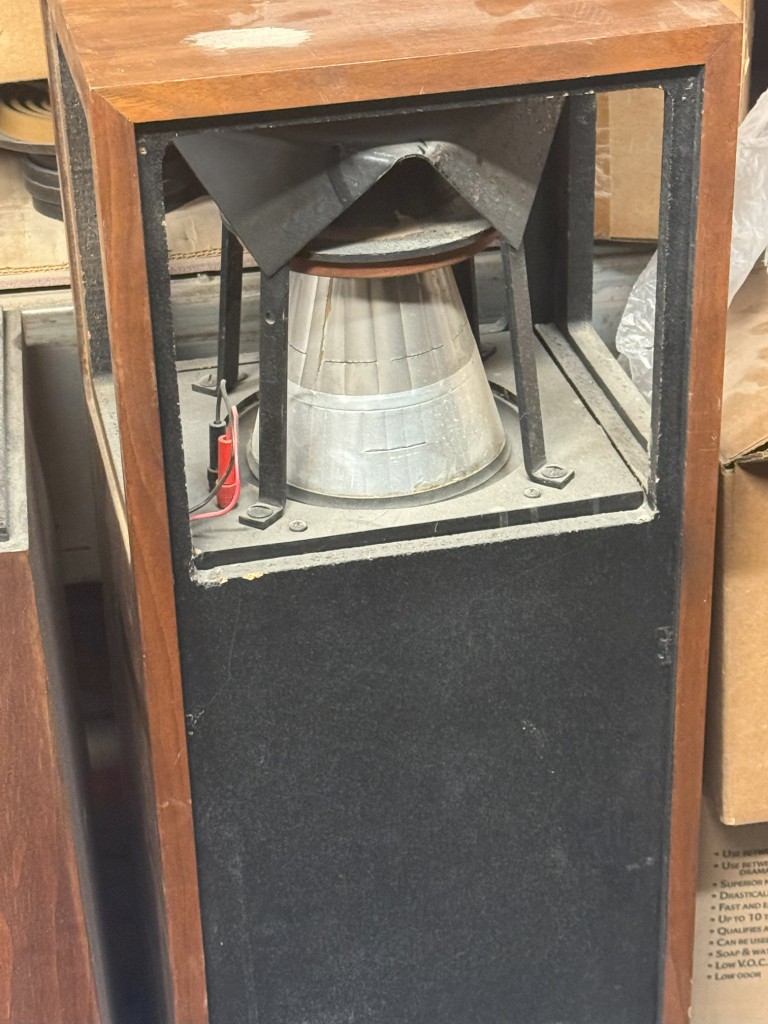
The building of Ohm speakers' cabinets, drivers, grilles, finishing, and packaging involves a lot of manual labour, and that plus the high costs of freight from USA has meant they have been expensive to retail in Australia. Only the more detailed parts such as top and bottom panels, and grille mounting frames are done by CNC routers, everything else involves manual operation of table saws, hand held routers, sanders, welders, paint sprayers etc. I saw several techniques and jigs that will improve on the methods I used to build the cabinets. The drivers are made in a separate factory in Brooklyn and then enclosed in a metal cylinder in Bridgeport. The drivers and grilles will continue to be fully imported from the Ohm factory and I install them onto the cabinets that I have made.
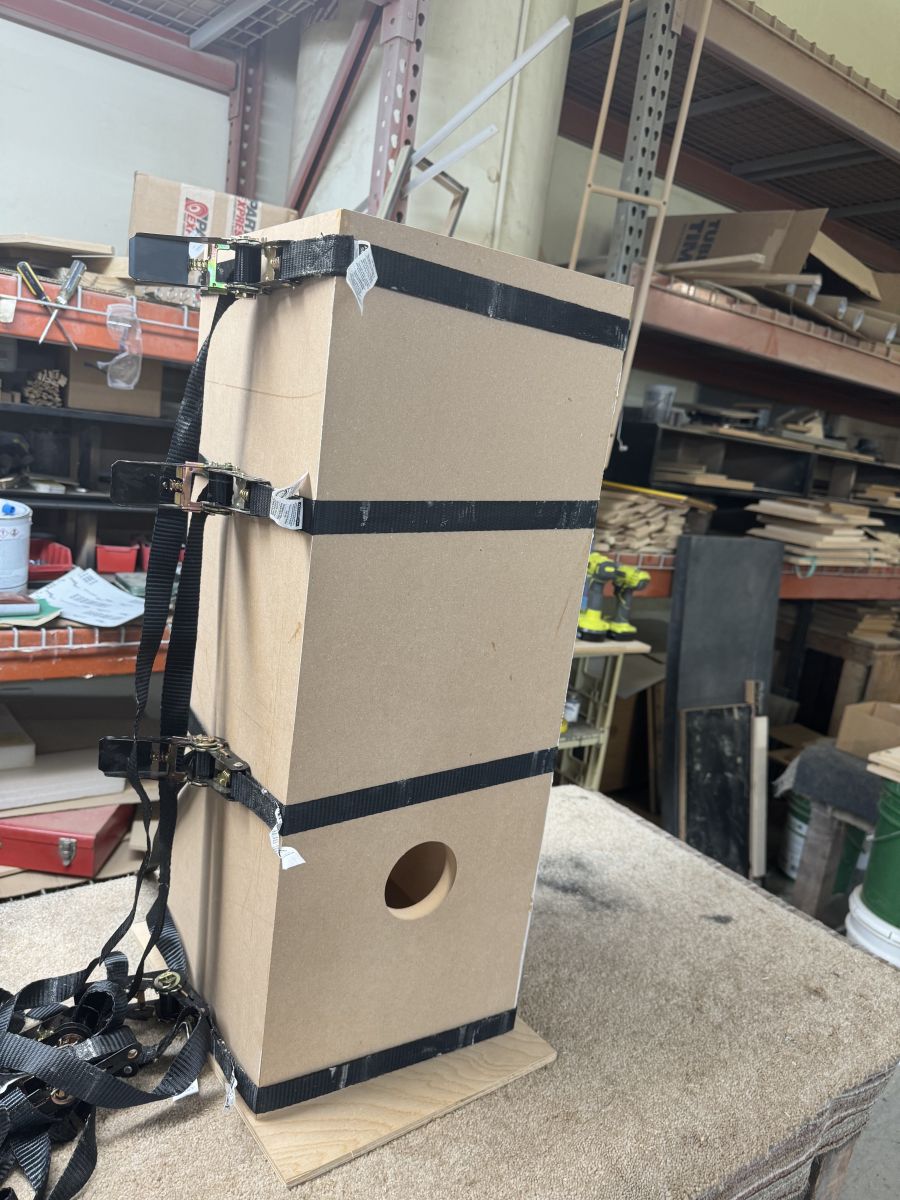 Once the four side panels have been cut up on a table saw they are glued up and held in position with ratchet straps. Each panel is mitre cut and has a damping panel green glued to its inside. Strips are glued into the corners between the damping panels.
Once the four side panels have been cut up on a table saw they are glued up and held in position with ratchet straps. Each panel is mitre cut and has a damping panel green glued to its inside. Strips are glued into the corners between the damping panels.
.jpg)
.jpg) The tuning tube is glued into the bottom panel and then that panel is glued into the side panels. The top panel has inserts which will be used to bolt the driver onto the top of the cabinet. It gets flipped over and glued into the top of the cabinet.
The tuning tube is glued into the bottom panel and then that panel is glued into the side panels. The top panel has inserts which will be used to bolt the driver onto the top of the cabinet. It gets flipped over and glued into the top of the cabinet.
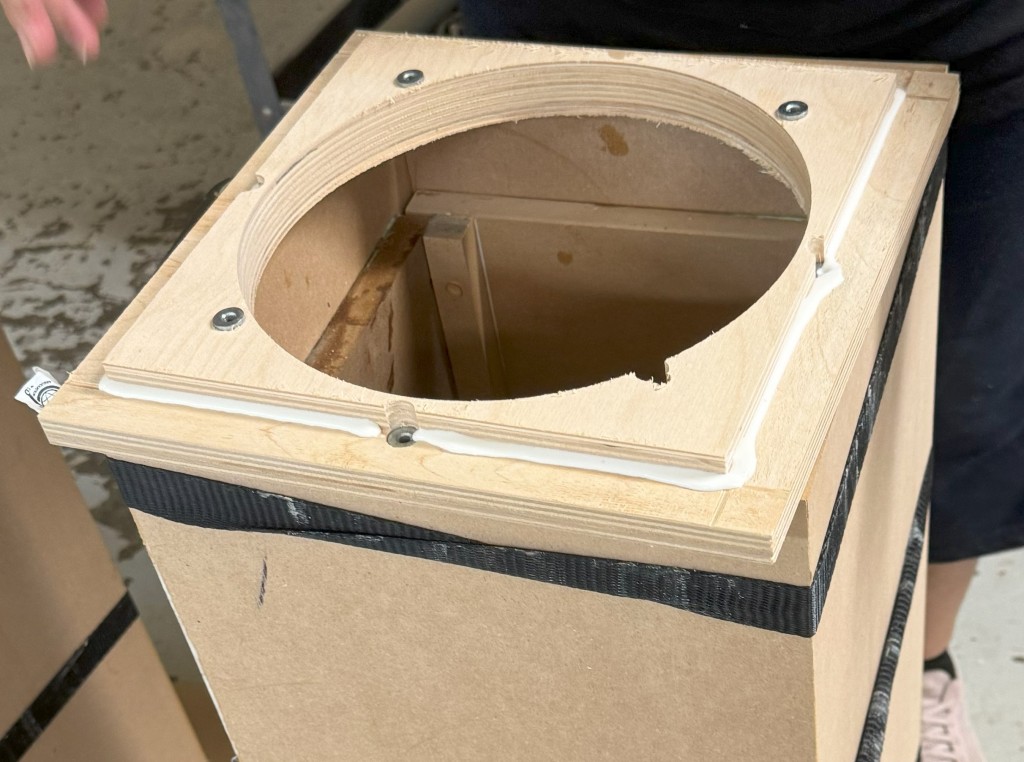
The next step is to round over the vertical edges of the cabinets with a router..jpg)
Once the cabinet is contructed and trimmed and sanded it is ready for veneering.
The veneering process is shown here with walnut being applied to a MicroWalsh Tall speaker. The top has previously been veneered.
.jpg)
 The rear panel veeneer is skillfully done so that the join is scarcely visible.
The rear panel veeneer is skillfully done so that the join is scarcely visible.
Then the ends get trimmed with a router and the whole cabinet is sanded lightly.
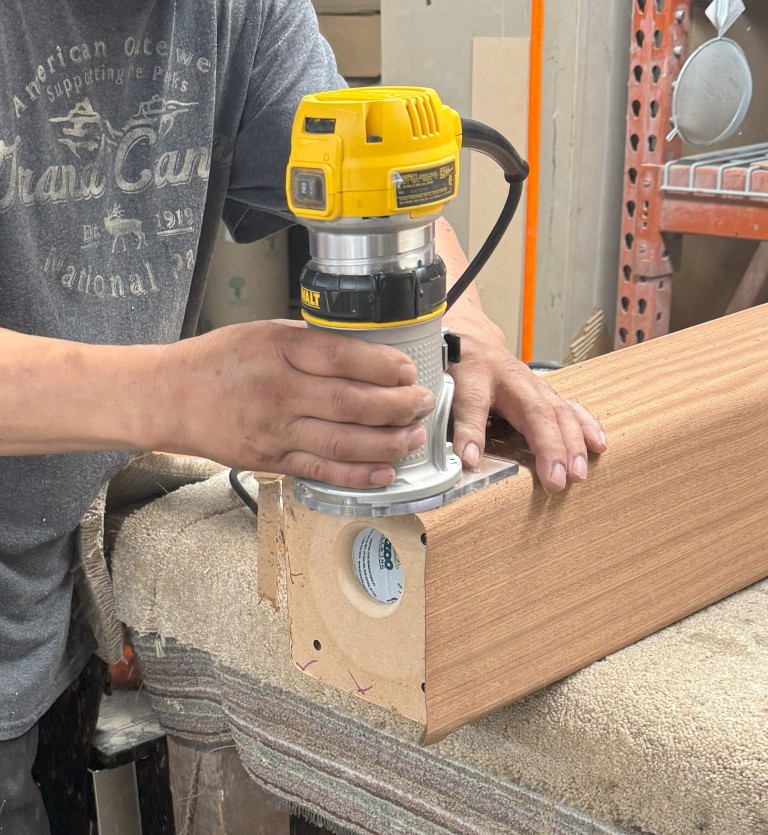
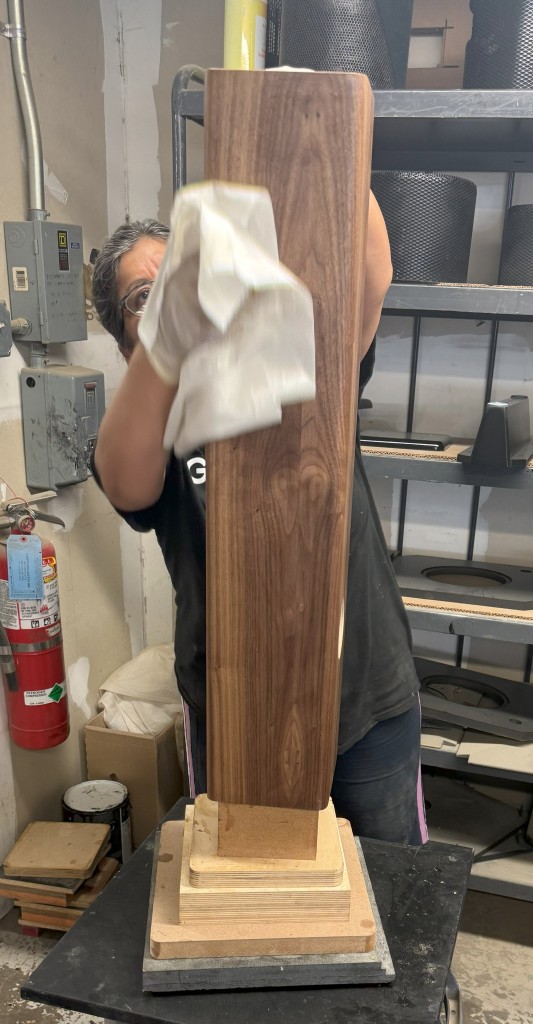
The beauty of t he timber is revealed when the finishing oil is applied by hand.
he timber is revealed when the finishing oil is applied by hand.

The drivers are built in a different location, but their cylindrical cover, and the grille frames are made in the Bridgeport factory. This jig is used to ensure the grille frame is perfectly square.
The factory includes a spray booth where the metal driver covers and grilles are painted, and also the bases.

The driver is bolted to the top of the cabinet. The completed speakers have a carton over them and are then protected in a double thickness larger carton with foam spacers to prevent damage in transit.

